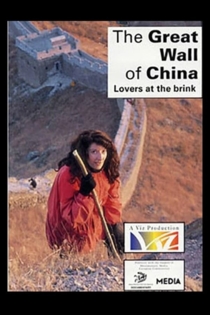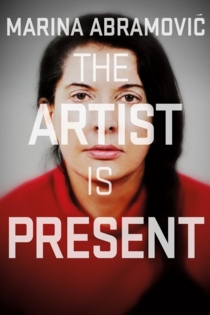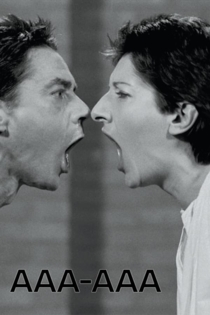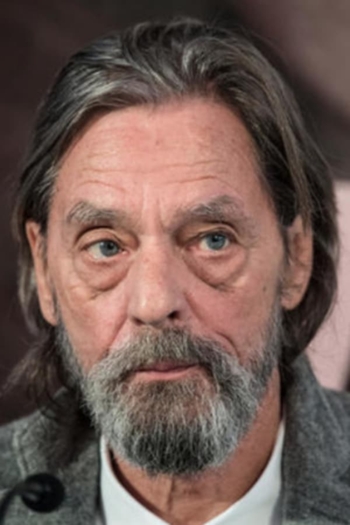
Ulay
1943 (81 год)How I Stole a Painting
Ulay, Christian Lund
The story of one of the most radical performances in art history told by German artist Ulay, who in 1976 decided to steal Hitler's favorite painting from Berlin's national museum and hang it in the home of a Turkish immigrant family. "This particular painting you could say was a German identity icon." In 1976 Ulay decided to steal the painting 'Der arme Poet' (The Poor Poet) (1839) by Carl Spitzweg, which was said to be Hitler's favorite painting. By stealing the painting from the Neue Nationalgalerie (New National Gallery) in Berlin, Ulay broke away from what he had done previously, aiming "to give a strong signal about what I was about as an artist at the time."
How I Stole a Painting
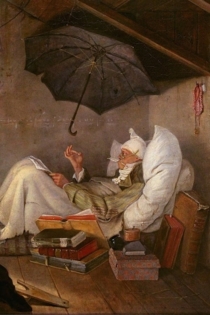
The Way Between Two Points
Sebastián Diaz Morales
Jose Soraide, Ulay
El camino entre dos puntos (The way between two points) investigates Patagonia’s tainted nature. Here, where throughout the 20th century ever enhanced methods of oil recovery, have transformed an amorphous, ambivalent and hardly populated landscape into an uncanny site of man’s supposed mastery of nature, the film traces the ways of a man, who wanders the scenes aimlessly, bound by his own implication in the menacing mechanics of oil production but drawn physically to their coevally proceeding erasure by the rough and untamed nature of this seemingly self-subsisting land.
The Way Between Two Points
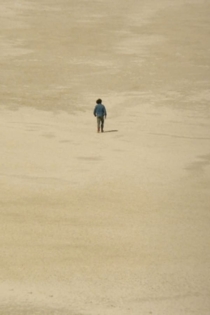
Ulay
Damjan Kozole
Ulay, Marina Abramović
Ulay is a conceptual artist whose photography pushed boundaries, and whose love affair with Marina Abramovic produced some of the best pieces of performance art. Diagnosed with cancer shortly after agreeing to film the documentary, Ulay's illness informs Project Cancer, which is part-retrospective, part-visual document of the year he believed could be the last of his extraordinary life.
Ulay

Balkan Baroque
Pierre Coulibeuf
Marina Abramović, Paolo Canevari
Balkan Baroque is a real and imaginary biography of the Yugoslavian performance artist Marina Abramovic. Rather than a mechanical reproduction of the artist's work, the film tries to create a new reality by translating the performances into cinematographic images that intensify the fictional context of the film. Abramovic plays herself, but ,appearing in multiple forms, blurs her own identity. Memories and fantasies intermingle with day to day rituals. The chronological narrative often breaks to reflect the interior voyage of the protagonist from the present to the past and back to the present. The result is a visually impressive film. Balkan Baroque had its world premiere at the International Film Festival Rotterdam, 1999.
Balkan Baroque
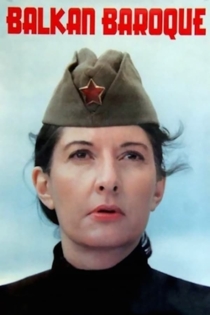
Rest Energy
Marina Abramović, Ulay
Marina Abramović, Ulay
Ulay and Abramovic draw a large bow and arrow, one holding each side. The arrowhead is pointing at Abramovic's heart. The slightest movement could be fatal. Microphones on their clothes pick up their quickening heart beats and Ulay's irregular breathing
Rest Energy

Imponderabilia
Marina Abramović, Ulay
Ulay, Marina Abramović
"Naked we stand opposite each other in the museum entrance. The public entering the museum has to turn sideways to move through the limited space between us. Everyone wanting to get past has to choose which one of us to face" – Marina Abramovich
Imponderabilia
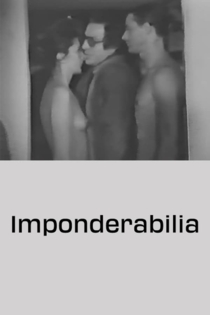
There Is a Criminal Touch to Art
Ulay
Ulay
A documentation of the live Action Ulay performed in Berlin in 1976. It shows step by step his arranged "art theft" of Carl Spitzweg's painting "The Poor Poet" from the Neue Nationalgalerie and his reception in commentaries and reactions from the press.
There Is a Criminal Touch to Art
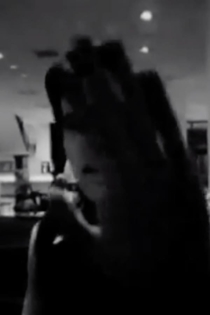
The story of Marina Abramovic and Ulay
Ulay, Marina Abramović
Legendary couple in performance art – Marina Abramović and Ulay – lived together for 12 years and made pioneering work as a duo. In this extraordinary double interview the artists looks back on their relationship – from their first meeting in 1975 until now.
The story of Marina Abramovic and Ulay
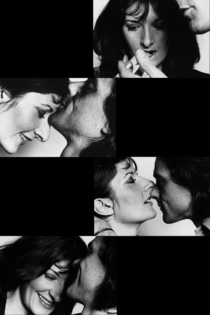
City of Angels
Marina Abramović, Ulay
Combining video, performance art, documentary, and tableau vivant, this short piece set in what appears to be part of the Ayutthaya Ruins in Bangkok, Thailand, begins with a panoramic shot of various Thai folks dressed in traditional garb and sleeping in the grass as a woman narrates. The rest of the piece is broken into six unbroken shots of these individuals in still poses depicting both some aspect of Thai life as well as suggesting its disquieting alienation from modernity, as the same woman narrator now sings. The final shot is again of the ensemble sleeping, suggesting that the previous montage was, indeed, a collective dream.
City of Angels
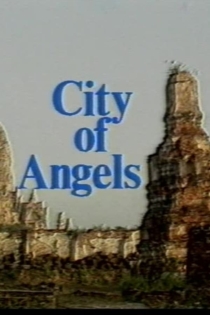
The Great Wall: Lovers at the Brink
Murray Grigor
Marina Abramović, Ulay
In the twilight years of the Cultural Revolution, a Chinese filmmaker slowly becoming blind tours the country screening her last film to peasants. In it, the woman imagines two "alien" lovers walking from end-to-end along the Great Wall to join each other in the middle, one last time. This documentary is an adaptation of Ulay and Marina Abramovic's final collaborative project, the 1988 performance "The Lovers: The Great Wall Walk."
The Great Wall: Lovers at the Brink
